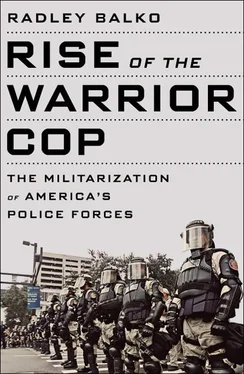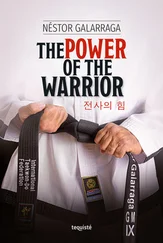Those tragedies transpired because in the coming decades the Court would adopt Clark’s reading of the exceptions into statutes that didn’t mention them, and eventually into the Fourth Amendment itself. The exceptions would be expanded to the point where, perversely, the Court’s interpretation of the Fourth Amendment in regard to the knock-and-announce rule would put more emphasis on preserving evidence and protecting law enforcement than on the Castle Doctrine and protecting the home from violence.
Interestingly, it’s far from clear that a majority of the justices in Ker actually backed Clark’s interpretation of the Castle Doctrine. Although the vote was 5–4 in favor of upholding Ker’s conviction, Justice John Harlan II voted with the majority only in the outcome. Harlan didn’t agree with incorporating the Fourth Amendment’s reasonableness requirement to the states. Instead, he thought the California law under which the Kers were convicted should be evaluated under the Due Process Clause of the Fourteenth Amendment, which he described as “more flexible” than the Fourth Amendment standard applied to federal law enforcement. Harlan didn’t expressly write that the Ker search violated the Fourth Amendment. If that was indeed what he believed, then a majority of justices believed that, had the Ker search been carried out by federal agents, it would have been unconstitutional. And a majority had already indicated that the Fourth Amendment should be incorporated to the states. That would seem to suggest that there’s at least a chance that the decision in Ker , while bad for the Kers, actually narrowly upheld the Castle Doctrine protections in Miller .
But that isn’t the way the decision was interpreted. When lawmakers, academics, and the media discussed and debated the knock-and-announce rule over the next twenty years, Ker would be referenced as accepted law, even by civil liberties advocates.
A year after Ker , in 1964, New York governor Nelson Rockefeller pushed two laws that would give police in the state sweeping new powers: the “no-knock” bill and the “stop-and-frisk” bill. (Nine years later he would push through some of the most draconian antidrug laws in the country, collectively known as the Rockefeller Drug Laws.)
The no-knock bill allowed police to get a special search warrant authorizing them to ignore the knock-and-announce requirement, so long as a state judge agreed that one of the exigent circumstances that Justice Clark laid out in Ker was present. The stop-and-frisk bill allowed police to stop, detain, and pat down anyone in a public space whom they found suspicious. The no-knock bill passed with overwhelming support from the New York Assembly and State Senate. The stop-and-frisk bill passed by narrower margins. 5
There was at least some opposition. Civil rights groups like the NAACP and the Congress of Racial Equality (CORE) held rallies in protest of both bills. 6The Association of the Bar of the City of New York protested the stop-and-frisk bill but supported the no-knock searches. The New York State Bar Association opposed both and argued that the no-knock bill “flies in the face of a long-established policy that ‘a man’s home is his castle,’ and for the state to invade it, it must strictly comply with safeguards which have been found to be important over the years.” Rockefeller and other supporters emphasized that officers still had to get a warrant. A judge had to be first “satisfied by proof under oath that notice will endanger the safety of the officer or another person, or that the evidence may be readily destroyed.” The bar association answered that “experience has shown that the supposed safeguard of a special oath to the magistrate issuing the warrant would speedily become a boiler-plate routine.” 7That too was a concern that Brennan had expressed in Ker . As we’ll see, both Brennan and the New York State Bar Association would be proven correct.
In the short term, Rockefeller’s no-knock law had surprisingly little impact. The New York Times later reported, in 1970, that while the law “score[d] points with the law-abiding public,” it had almost no impact on how warrants were served in the state. The paper reported that in a “recent” year since the law had been passed (the precise year wasn’t specified), “the New York State Police used the law only 12 times in 1,847 narcotics cases.” 8There were probably more no-knock raids than that. A cop could still decide at the scene that exigent circumstances had materialized after he had obtained a regular search warrant. (It would then be up to a court to decide if that assessment had been correct.)
Nevertheless, there was little indication that the police even wanted the law, and the fact that they used it so little after it was passed suggests that it was more of a political statement than an essential law enforcement tool. Police departments in New York didn’t even appear to find this tool useful , much less essential. Perhaps they found the tactic unnecessarily invasive and aggressive. Perhaps they feared that barreling into a home unannounced was more likely to invite violent retaliation than prevent it. But the law didn’t come with any accompanying public or political cries for New York cops to get more aggressive and confrontational with suspected drug offenders.
Richard Bartlett, one of the bill’s sponsors in the legislature, was serving on a state penal law commission at the time. The commission was charged with interviewing law enforcement officials, criminologists, and other experts, then recommending laws to improve the state’s criminal justice system. Bartlett says that the no-knock law was not the product of his commission’s research. “It was just something one of these groups—I think it was the district attorneys’ association—came up with that picked up political momentum. But it wasn’t anything we studied on the commission.” 9
If the police seldom used the no-knock law after it passed, that may have been because crime wasn’t yet the demagogic issue it would soon be. Rockefeller’s push for the laws didn’t come with the war imagery and apocalyptic rhetoric that would soon emanate from Nixon and the cadre of crime-fighting Republicans elected to Congress several years later.
The most lasting effect of the Rockefeller’s push in 1964 was to legitimize no-knock raids. Prior to the law, police only occasionally raided a residence without an announcement. Sometimes they got away with it, sometimes they didn’t. According to the Oxford English Dictionary , the first public appearance of the phrase “no-knock raid” came in 1964. That’s also the first time the phrase appears in the archive of the New York Times . Rockefeller made the no-knock raid a policy, and he gave it a name. No longer merely a decision that cops sometimes make in the heat of the moment, it was now a tactic and an issue. It was something that everyone was either for or against.
IN THE SUMMER OF 1965, LOS ANGELES ENDURED A SUFFOCATING heat wave. Few in the city had air conditioning, particularly in the poorer neighborhoods, so the heat collected in homes during the day, sending residents outside in the evenings in search of a breeze.
California Highway Patrol officer Lee Minikus was headed north on Avalon Boulevard in the Watts neighborhood on his motorcycle on an August evening that summer when a motorist pulled up beside him to indicate that the 1955 Buick Special ahead had been weaving, and the driver might be intoxicated. Minikus pulled over the driver, twenty-one-year-old Marquette Frye. After discovering that Frye had no driver’s license, Minikus asked him to perform a sobriety test. 10Frye put on a bit of shtick, and the two men exchanged jokes and banter. Amused passersby stopped and began to accumulate.
Читать дальше













